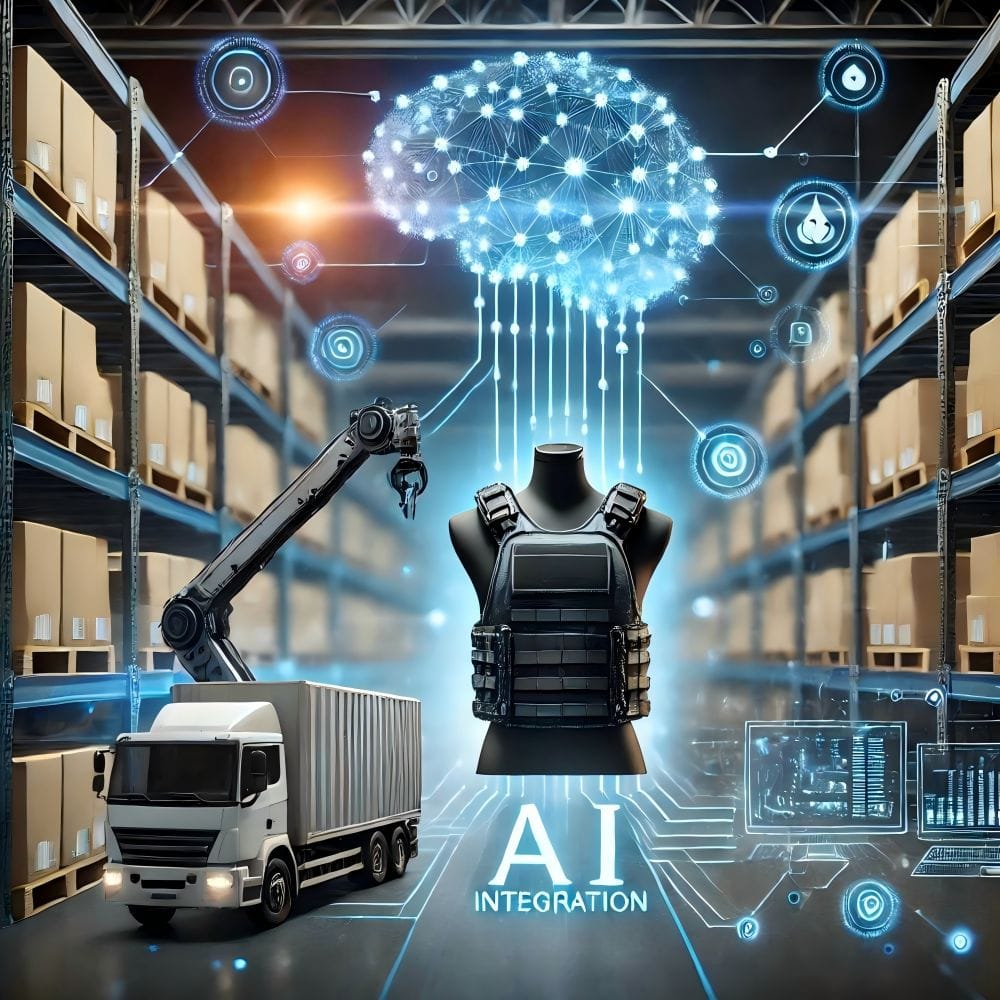The tactical gear industry faces unique challenges, including fluctuating demand, precise inventory requirements, and complex logistics. Traditional supply chain models often struggle to meet these demands, leaving gaps in efficiency and adaptability. This raises an important question: can artificial intelligence (AI) transform the tactical gear supply chain into a more efficient and responsive system?
AI’s potential lies in its ability to process vast amounts of data, make real-time decisions, and predict future trends. For tactical gear manufacturers and distributors, this means streamlined operations, optimized resource allocation, and reduced costs.
Key Areas Where AI Enhances Efficiency
Streamlined Logistics
Logistics are critical in delivering tactical gear, such as tactical vests, helmets, and accessories, to the correct location at the right time. AI-powered logistics systems can analyze traffic patterns, weather conditions, and delivery routes to optimize transportation. This not only reduces shipping times but also minimizes fuel consumption and costs.
For example, an AI-driven fleet management system can dynamically reroute delivery trucks to avoid delays, ensuring that shipments reach customers more efficiently. Such advancements are particularly valuable for fulfilling urgent military or law enforcement orders.
Data-Driven Decision Making
The tactical vest supply chain generates vast data from multiple sources, including sales, inventory, and production. AI algorithms can analyze this data to uncover actionable insights. Manufacturers can predict which products will be in high demand during specific periods and adjust their production schedules accordingly.
This capability is especially beneficial for tactical gear manufacturers, where overproduction can lead to high costs, and underproduction risks losing crucial contracts. By leveraging AI, companies can achieve a balanced approach that aligns production with demand.
Cost Reduction
AI enables significant cost savings by optimizing operations at every stage of the supply chain. From automating warehouse processes to reducing waste in manufacturing, AI-driven solutions can streamline workflows and minimize errors.
One key example is inventory management. AI systems can monitor stock levels in real-time, automatically triggering reorders when supplies run low. This eliminates the need for manual checks and prevents stockouts or overstocking. For tactical gear, where precision in inventory is critical, such systems provide a significant competitive advantage.
Industry Insights and Success Stories
AI adoption in the tactical gear industry is still in its early stages but is growing rapidly. A study by McKinsey highlights that companies adopting AI in their supply chains see an average cost reduction of 15% and a productivity increase of 25%. These figures underscore the potential benefits for tactical gear manufacturers.
For instance, a leading tactical vest manufacturer implemented an AI-based demand forecasting tool, which reduced inventory holding costs by 20%. The company could increase production by predicting peak demand periods, ensuring timely delivery to clients without overburdening storage facilities. Such examples demonstrate how AI can directly impact the bottom line.
Why Tactical Gear Manufacturers Should Adopt AI Now
The tactical equipment supply chain is increasingly complex, with rising customer expectations and growing competition. AI offers a powerful solution to these challenges, providing manufacturers with the tools to improve efficiency, reduce costs, and stay ahead in the market.
As the industry continues to evolve, early adoption of AI technologies will be a defining factor for success. Tactical gear manufacturers and suppliers should invest in AI now to unlock its full potential and gain a competitive edge. The future of tactical gear supply chains is here, and AI is leading the way.
